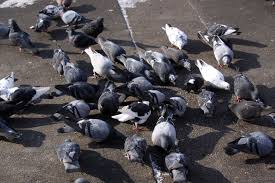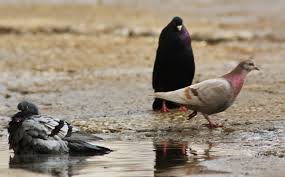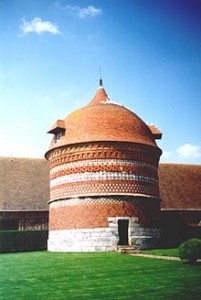By Thomas Parker (Regular Contributor)
In Stardust Memories (1980), Woody Allen referred to pigeons as “rats with wings,” and the moniker has stuck. But the pigeon’s reputation has not always been so low. Pigeons, or doves, another word for the same bird, appear with positive connotations in both the Old and New Testaments, and the ancient Greeks took them to be divine intercessors, interpreting their coos and flights around a sacred oak in Dodona as messages from Gaia, the goddess of the earth.
At the table, squab (baby pigeon) was a delicacy in ancient India, Egypt, and Rome. It was widely enjoyed throughout Europe from the Middle Ages on, and served as the seventh course on the Titanic.
That lofty reputation has plummeted in the last century as pigeon populations have flown from rural environs to invade our cities. We no longer focus on their godliness, nor even their juicy “squabness,” but rather their invasiveness as they cross the mental borders we construct to separate animal nature from human culture. The unseemliness of their droppings disgusts, their lasciviousness appalls, the males chasing the females around the park on two feet like ungainly bird rapists, and their scavenging of trashcans and gutters relegates them to the dregs of the animal world.

But, here again, though pigeons are gutter birds today, they once soared high in the collective spirits as an aristocratic animal, considered fine eating by nobles who invited the pigeon onto their estates by building grandiose dovecotes, some of which could house 2000-3000 pairs of pigeons.
Pre-Revolutionary France led Europe in the estimated 42,000 dovecotes it possessed, more than double the quantity of any other country. The dovecote provided a ready source of meat for nobles, but also served as a sort of accessory that announced the wealth, elegance, and prestige of the owner through the stateliness and intricacy of its architecture. Most of all, possessing a dovecote in itself was a privilege reserved by law to noble landowners.
But here too, the pigeons’ flight pattern led to their disrepute. The birds infuriated the serfs, peasants, and country farmers by winging forth from their noble abodes to feed on commoners’ fields, fattening the lord at the expense of the everyman. At the hour of the Revolution, pigeons became a symbol for the noblemen themselves, inciting such anger, that legislative action was taken against the bird.
The first decree stipulated that all people, no matter what their class, should be able to possess dovecotes. But that was not enough: the rage against the nobles was so great that commoners sought revenge, storming the country, destroying dovecotes and murdering the birds en masse. Their moral disgust for the bird did not entirely translate into a physical disgust for its meat, but the net effect was a drastic reduction of the amount of pigeon served on nineteenth-century French tables.
 All of this brings us back to flight patterns. If the pigeon’s movements were equated with nature in antiquity, in modernity, the bird’s invasion into human culture and agriculture has led to its plight, relegating it from divine exaltation to earthly execration.
All of this brings us back to flight patterns. If the pigeon’s movements were equated with nature in antiquity, in modernity, the bird’s invasion into human culture and agriculture has led to its plight, relegating it from divine exaltation to earthly execration.


